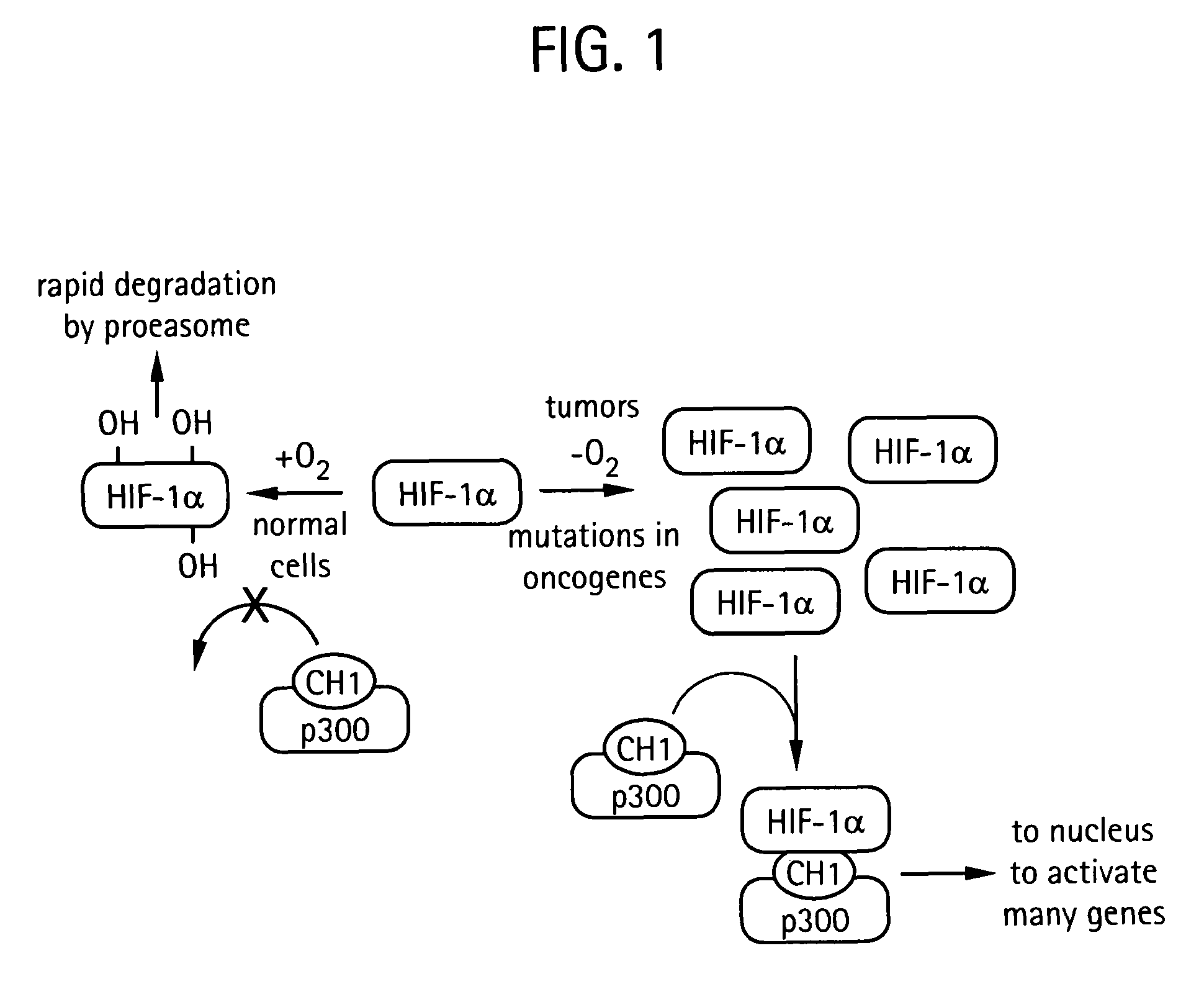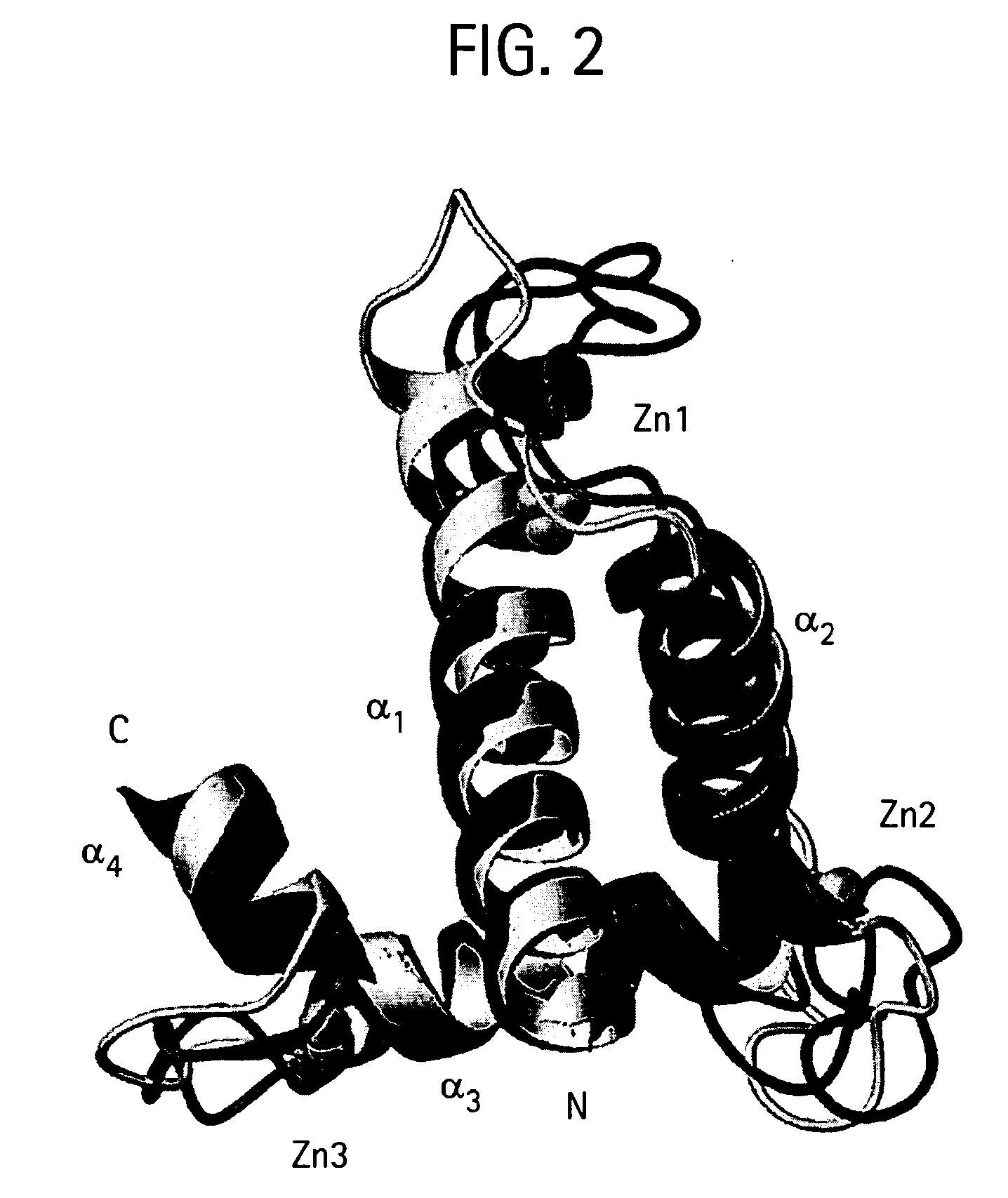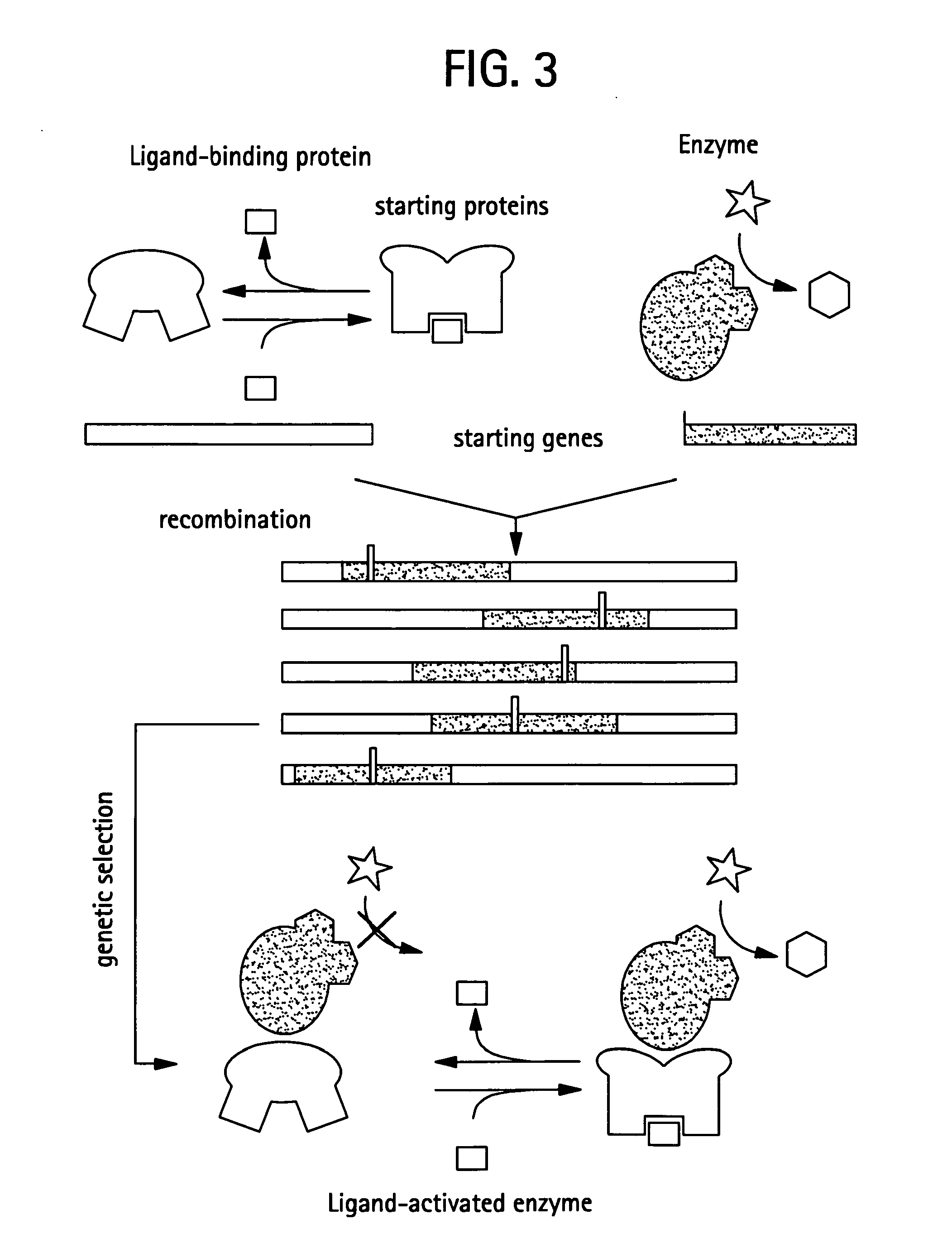Prodrug activation in cancer cells using molecular switches
a technology of molecular switches and prodrug activation, which is applied in the field of prodrug activation in cancer cells using molecular switches, can solve the problems of insufficient use of molecular switch technology, large complexity of biological systems, and difficulty in creating gene delivery vehicles that are both efficient and efficien
- Summary
- Abstract
- Description
- Claims
- Application Information
AI Technical Summary
Benefits of technology
Problems solved by technology
Method used
Image
Examples
example 1
Creation of Protein Switches by In Vitro Recombination of Non-Homologous Genes
[0204]A general strategy was developed that is theoretically amenable to a wide variety of input and output functions that can create switches with large changes in output both in vitro and in vivo. In this approach, natural or engineered proteins with the desired input and output functions are combined in a systematic fashion to create libraries of recombined proteins. From these libraries, switches with coupled functions are suitably identified using genetic selection and screening. Such an approach is inspired by the evolutionary mechanism of domain recombination (68), a major facilitator in the natural evolution of protein function (69). Domain recombination strategies have been applied to the construction of switches (22-30), but the very limited manner in which the domains were recombined has restricted the success of this approach. A diverse exploration of fusion geometries between two proteins woul...
example 2
Mechanisms of Switching
[0209]Experiments described herein are also aimed to elucidate the mechanism by which the engineered switches function. Analytical gel filtration indicates that both RG13 and MBP317-347 function as monomers (6,10) and not, for example, 3D domain-swapped dimers (70). Both RG13 and MBP317-347 have circular dichroism (CD) spectra that exhibit only minor changes upon addition of maltose, indicating that there is no gross rearrangement of secondary structure. Furthermore, the switches' CD spectra and NMR spectra approximate that of the admixture of the spectra of BLA and MBP, consistent with the structures of the switches domains being very similar to that of the parental proteins. Computational tools can be used to predict the structure of domain insertion proteins with the long-term goal of predicting switch structure.
[0210]The switching correlates with a conformational change in the MBP domain of the switch. Maltose-induced fluorescence quenching and wavelength ...
example 3
Zn2+ is a Negative Effector of RG13-Ligand Binding and Allostery can Emerge Simultaneously
[0211]How heterotropic allostery originates is an unanswered question. The evolution of such allosteric sites must be more difficult than the evolution of non-allosteric ligand binding sites, since allosteric sites require both affinity for the intended effector and functional coupling between the effector-binding site and the active site. Experimental evidence supports a counter-intuitive model for the evolution of heterotropic allosteric effects in which effector-binding and allosteric signaling emerge simultaneously (10).
[0212]In the process of trying to convert the maltose-activated beta-lactamase switch RG13 into one that was Zn2+ activated, it was surprisingly found that Zn2+ already was a noncompetitive, allosteric inhibitor of RG13 that completely turned off enzyme activity. This is surprising since wild type BLA enzyme activity is not modulated by Zn2+ and neither MBP nor BLA bind Zn2+...
PUM
| Property | Measurement | Unit |
|---|---|---|
| concentration | aaaaa | aaaaa |
| physiological temperature | aaaaa | aaaaa |
| dissociation constant | aaaaa | aaaaa |
Abstract
Description
Claims
Application Information
 Login to View More
Login to View More - R&D
- Intellectual Property
- Life Sciences
- Materials
- Tech Scout
- Unparalleled Data Quality
- Higher Quality Content
- 60% Fewer Hallucinations
Browse by: Latest US Patents, China's latest patents, Technical Efficacy Thesaurus, Application Domain, Technology Topic, Popular Technical Reports.
© 2025 PatSnap. All rights reserved.Legal|Privacy policy|Modern Slavery Act Transparency Statement|Sitemap|About US| Contact US: help@patsnap.com



